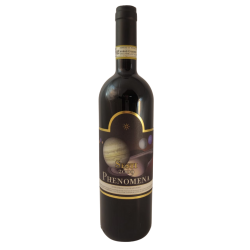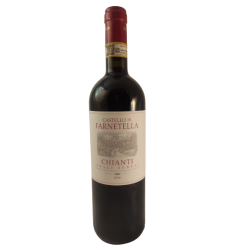We all know that the geographical indications of Italy are not exactly simple, and even though it is not necessary to be an expert to enjoy its wines, it is true that understanding it helps us appreciate it and savor its differences.
That is why we want to explain to you in this blog what are the differences between the two most important appellations of origin in Tuscany, Chianti and Brunello di Montalcino. Based on the fact that Tuscany is the center of wine in Italy and Sangiovese its queen grape, it is interesting to appreciate that, being so close and using the same grape, these two areas produce wines that are not as similar as it might seem a priori. . Let's start at the beginning, with the grape, and that is that while Brunello di Montalcino requires 100% Sangiovese for its wines, in Chianti a minimum of 80% is required, and other varieties can be used for the rest. In addition to that, it must be taken into account that they use the same grape variety, but not the same clone, since, in the middle of the 19th century, the Sangiovese Rosso clone, known there as Brunello, was created in Montalcino. This clone gives smaller grains and therefore results in more concentrated wines with greater aging capacity.
Another interesting aspect to take into account is its location and its terroir, the Chianti Classico area is located in the hills that lie between the city of Florence and Siena, with varied soils and a relative altitude that reaches up to 500 meters. Brunello, for its part, is located further south in Tuscany, with a warmer climate and poor limestone soils, which has a clear influence on the flavor and style of its wines, which are fuller and have more aging capacity. While Chianti wines are relatively “young” drinking wines, Brunellos have a world-renowned aging capacity of between 10 and 30 years.
Precisely speaking of aging, we find one of its main differences in terms of production method. In the Brunello denomination we find one of the most demanding aging requirements in the world, having to remain in the cellar for 5 full years, of which a minimum of 2 years in barrels and 4 months in bottle. Chianti, for its part, is a much more lax denomination in terms of aging, requiring a minimum of 3 months for a basic Chianti, 10 months for Chianti Clássico and 38 months for Chianti Riserva. In summary, the Brunello will always be more powerful wines and with greater aging capacity, and in Chianti it will depend on the producer and the specification, so we will find wines that are lighter and ready to drink and other more corpulent and complex ones that will be worth it. keep.
As always in the world of wine this could get as complicated as you want, but here is a little guide with which you can understand and enjoy this wine heritage that is Tuscany.
Cheers friends!

 Chateau Grand Puy Lacoste: Tradition and Innovation
Chateau Grand Puy Lacoste: Tradition and Innovation
 Louis Roederer: An Emblematic Champagne
Louis Roederer: An Emblematic Champagne
 Sine Qua Non: A must for Wine Lovers
Sine Qua Non: A must for Wine Lovers
 Grace Wine : The Star of Japanese Wines
Grace Wine : The Star of Japanese Wines
 Viña Seña iconic Chilean wine
Viña Seña iconic Chilean wine





